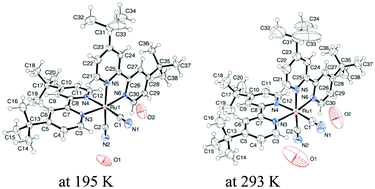Isotope effect of crystal water on emission lifetime of Ru(dbb)2(CN)2·2H2O (dbb = 4,4′-di-tert-butyl-2,2′-bipyridine) crystal†
Abstract
We studied the isotope effect of crystal

* Corresponding authors
a
Department of Nanosystem Science, Graduate School of Nanobioscience, Yokohama City University, 22-2 Seto, Yokohama 236-0027, Japan
E-mail:
shino@yokohama-cu.ac.jp
Fax: +81 45 787 2185
Tel: +81 45 787 2185
b
Department of Chemistry, Faculty of Science, Okayama University, 3-3-1 Tsushima-naka, Okayama 700-8530, Japan
E-mail:
suzuki@cc.okayama-u.ac.jp
Fax: +81 86 251 7900
Tel: +81 86 251 7900
We studied the isotope effect of crystal

 Please wait while we load your content...
Something went wrong. Try again?
Please wait while we load your content...
Something went wrong. Try again?
K. Shinozaki, K. Tenmyo and T. Suzuki, RSC Adv., 2013, 3, 7579 DOI: 10.1039/C3RA23362F
To request permission to reproduce material from this article, please go to the Copyright Clearance Center request page.
If you are an author contributing to an RSC publication, you do not need to request permission provided correct acknowledgement is given.
If you are the author of this article, you do not need to request permission to reproduce figures and diagrams provided correct acknowledgement is given. If you want to reproduce the whole article in a third-party publication (excluding your thesis/dissertation for which permission is not required) please go to the Copyright Clearance Center request page.
Read more about how to correctly acknowledge RSC content.
 Fetching data from CrossRef.
Fetching data from CrossRef.
This may take some time to load.
Loading related content
